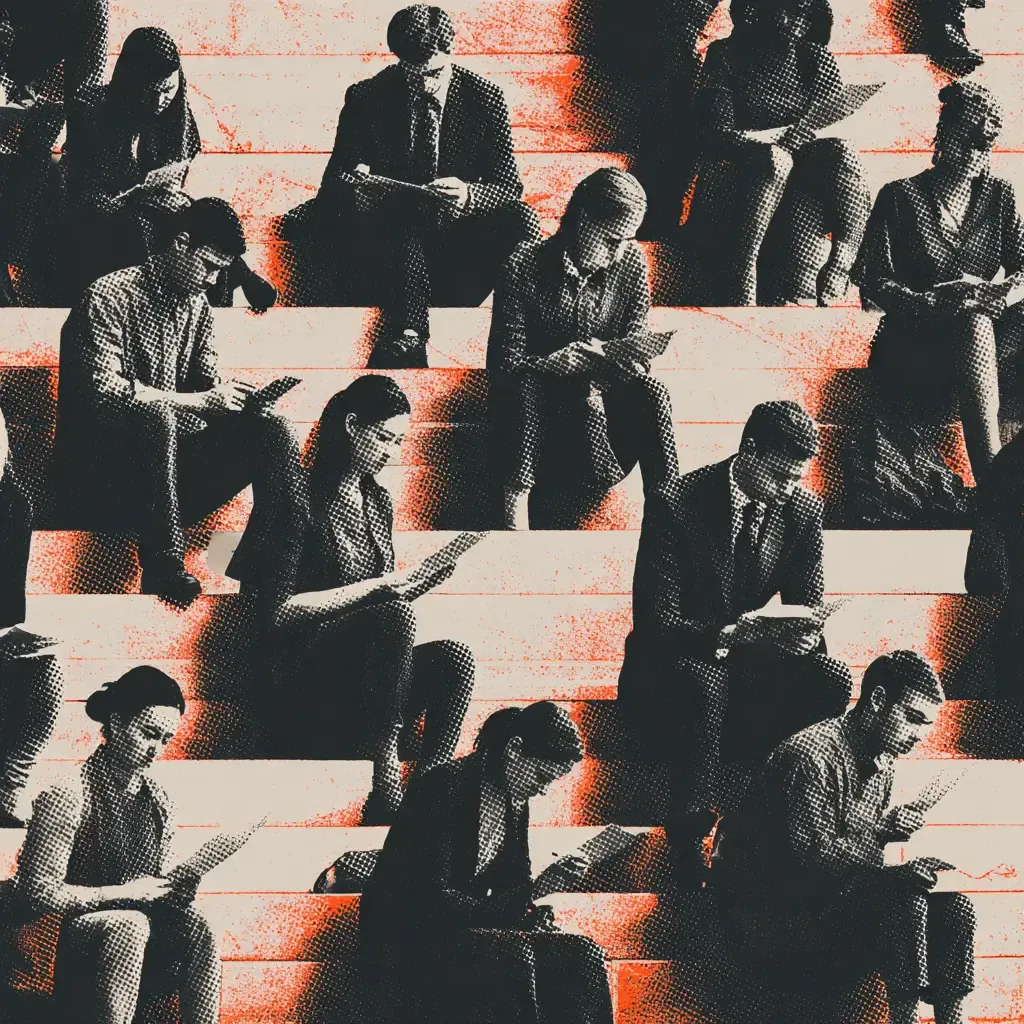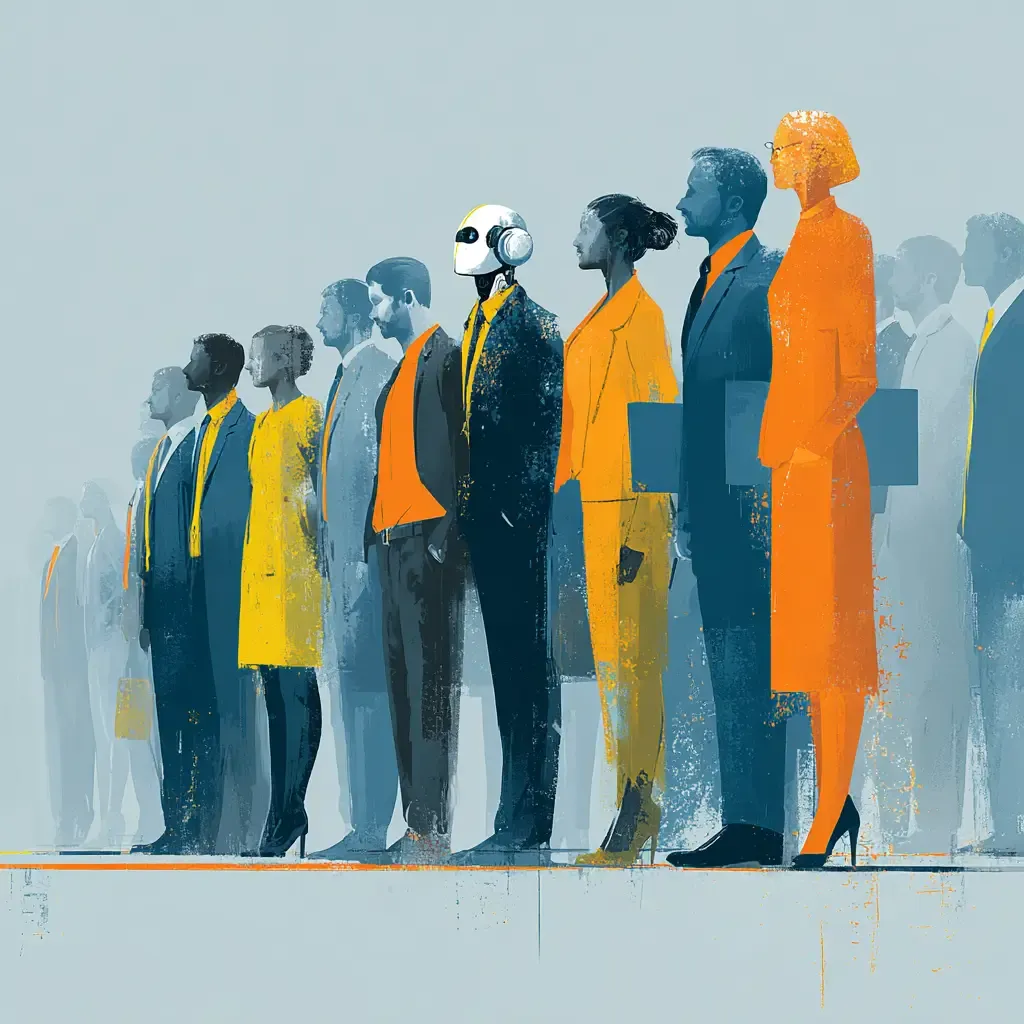The Brief, Issue #1
The goal isn’t outrage or hype. It’s awareness.
We track what’s emerging on the edges, from AI policy moves and platform power plays to cultural and organizational implications, and translate them into the language of practice.
Each piece asks a simple question: What does this mean for how we lead, advise, or adapt?
Think of these as early warnings and ethical weather reports for the modern practitioner.
When innovation means never having to ask permission
TL;DR: Sora’s opt-out policy turns copyright law on its head. By making inclusion the default, OpenAI shifts the burden of protection from the acquirer to the creator—forcing artists and rights holders to spend time and money just to say no. It’s not consent; it’s reverse consent, a quiet redefinition of ownership dressed up as innovation. This model favors corporations with legal teams, exploits independent creators’ bandwidth, and exposes a growing asymmetry of power between those who build technology and those whose work fuels it.
The rollout of OpenAI’s Sora, a groundbreaking text-to-video model, included a crucial but legally and ethically questionable detail regarding its data acquisition policy: “Hey, copyright owners! We’re gonna treat your characters and creations like a free-for-all buffet—unless you affirmatively ask us not to use them.” This requirement for creators to opt out of having their work scraped and utilized for model training is not consent; it is a profound and calculated shift in power. It is the equivalent of a neighbor announcing, “By default, I’m going to use your Lamborghini to run errands—unless you explicitly tell me not to.”
This approach, framed by some as promoting “user freedom” or maximizing data utility, quietly invents a new legal concept: reverse consent. By making inclusion the default state, the AI developer (the acquiring party) shifts the entire administrative and financial burden onto the copyright holder (the property owner). This sleight of hand transforms traditional copyright protection, which requires the acquirer to seek permission (an opt-in license), into a mechanism where the owner must pay the cost of denial.
Analogies of Forced Participation
To illustrate how radically this violates established norms of ownership and trespass, the analogies remain painful and effective:
- The Private Pool Invasion: Imagine moving into an apartment complex and, on day one, walking into a private resident’s backyard pool, performing a cannonball, and then announcing, “If you’d prefer I didn’t swim here, just tell me.” The resident is left to deal with the chlorine levels, the soggy lounge chairs, and the forced labor of policing their own property. Sora’s initial policy treats intellectual property not as private work, but as an unguarded pool that requires the owner’s constant vigilance to defend.
- Aggressive Digital Co-option: Consider me signing into your Netflix account, immediately changing your settings, corrupting your recommendations, and co-opting your “Continue Watching” queue. Then I tell you, “If you don’t like that, go to a specific menu and disable my access.” This scenario is digital trespass; the owner is forced to undertake administrative cleanup simply to restore the original state of their digital life.
- The Voice and Likeness Theft: Now, extend this principle to personal identity. I start a profitable podcast using your recorded voice, or likeness, reading excerpts from your copyrighted text. Every listener assumes you endorsed it. I send you an email saying, “If you want me to stop—just reply ‘no’.” Your silence or lack of bandwidth to check your email becomes my license, making your lack of objection a tool of exploitation.
These scenarios, whether physical or digital, showcase the same logical failure: the burden of proof and the cost of action are placed entirely on the party whose assets are being appropriated.
The Administrative Moat and Power Asymmetry
The stakes of this opt-out mechanism extend far beyond mere annoyance; they create a powerful economic barrier for independent and individual creators.
Administrative Burden as a Moat: While large studios or media corporations may have the legal departments and resources to create centralized opt-out workflows, the policy is actively damaging to small-scale creators—individual artists, indie authors, and independent photographers. For them, the process of registering, monitoring, and enforcing an opt-out across various rapidly evolving AI platforms is a massive, ongoing administrative task. This workload effectively functions as an economic moat, favoring large organizations that can absorb the cost of defense while drowning small creators in compliance labor.
The Reverse Burden of Proof: Traditional copyright law stipulates, “Prove I have rights, then grant them.” The opt-out framework shifts this to, “Prove I have rights, then pay the administrative cost to deny them before they are taken.” This fundamentally subverts the creator’s intrinsic ownership rights, turning IP defense into a reactive, exhausting, and costly endeavor.
The inherent discrepancy in OpenAI’s initial strategy further illuminates the leverage dynamics. Notice how an individual’s personal likeness (a user's face or voice) is often treated with an opt-in standard, requiring explicit consent for use. Yet, characters, stories, and artworks—the very intellectual property that fuels these models—are relegated to the opt-out standard. This discrepancy reveals a strategic prioritization of data acquisition over creator rights, treating creative output as a commodity that is available by default unless actively withdrawn. Though OpenAI has since begun backpedaling toward “more granular, opt-in” controls following widespread backlash, the original design of the policy remains a clear example of a technological power grab disguised in the language of bureaucratic default.
Final Thought
Call it innovation, disruption, or whatever the next press release decides—but when the cost of participation is vigilance, it’s not progress, it’s a protection racket. Sora’s opt-out policy isn’t just a copyright misstep; it’s a symptom of a larger ethical drift in AI, where convenience routinely outruns consent and power hides behind automation. The challenge for practitioners isn’t to stop the technology—it’s to name the trade-offs, question the defaults, and make sure progress doesn’t quietly erase permission along the way.
ChangeGuild: Power to the Practitioner™
Now What?
Awareness without action is just observation. Here are five ways practitioners can turn this moment into informed, responsible practice:
- Stay Informed—Relentlessly.
Don’t rely on hype cycles or headlines. Curate trusted sources that track AI policy, regulation, and ethics. Follow voices that analyze—not evangelize—emerging tools and standards. Knowing what’s coming isn’t paranoia; it’s preparation. - Audit Your Own Defaults.
Review where your organization uses “opt-out” or implied consent mechanisms in customer data, employee feedback, or digital analytics. What’s normal in one system can easily become normalized elsewhere. Ask, Who’s bearing the burden of protection here? - Elevate Ethical Foresight.
Make ethical review part of design, not cleanup. Whether you’re running change initiatives, advising leadership, or designing employee experiences, include a checkpoint for data rights, transparency, and informed consent. - Build Cross-Functional Literacy.
Encourage your teams—especially communications, HR, and IT—to understand the intersection of AI, policy, and human impact. Ethical intelligence is now a professional competency, not a philosophical add-on. - Advocate for the Creators.
If your organization leverages AI for content or analysis, insist on clear IP boundaries and attribution practices. Respect for creators isn’t just moral—it’s reputational insurance in a world where exploitation travels fast.
Frequently Asked Questions
Is OpenAI’s opt-out policy legal?
Technically, yes—but legality isn’t the same as legitimacy. The policy operates in a gray zone that current copyright law hasn’t caught up to. Until new regulations or precedent emerge, the burden of defense sits squarely on creators.
Why should practitioners outside of creative industries care?
Because “opt-out consent” is contagious. The same logic that lets AI models absorb creative work without permission can appear in employee data collection, customer analytics, and algorithmic decision systems. What’s happening to artists today will happen to organizations tomorrow.
Has OpenAI changed course?
Partially. After backlash, OpenAI promised more granular, opt-in controls for Sora’s data sources—but the original framework revealed how easily convenience can eclipse consent. The question isn’t whether they backtracked; it’s why the default was exploitation to begin with.
What ethical principle is at stake here?
Informed consent. AI systems are rewriting the moral contract between creators and consumers, replacing permission with presumption. Practitioners must recognize that default inclusion equals silent extraction.
What can I do to stay informed and respond responsibly?
Follow independent AI ethics analysts, legal scholars, and regulatory trackers—not just product updates. Embed ethical checkpoints into your change or tech projects, and treat “opt-in by design” as the new standard for responsible innovation.
This post is free, and if it supported your work, feel free to support mine. Every bit helps keep the ideas flowing—and the practitioners powered. [Support the Work]




